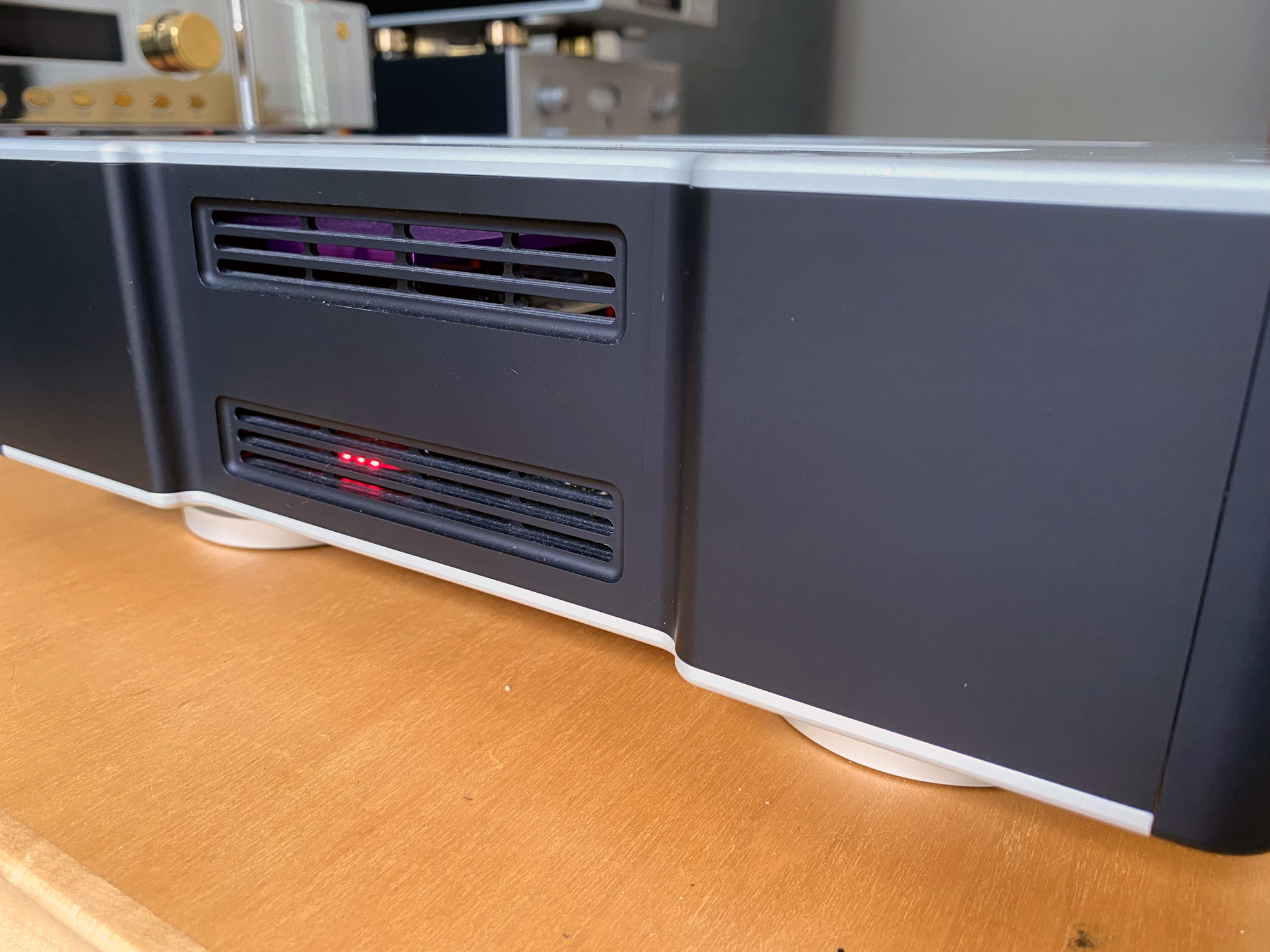The M21 does not feature MQA decoding. Per Brian, “[with exception] for the revenue stream from licensing, [MQA] has no place or use in the production and postproduction of high-quality audio. For reproduction and distribution there are plenty of codecs on the market, lossless and free, [in addition to] very high-res formats like DSD. In the end [MQA] will be a side note in history.” Personally, I stopped my online streaming subscription years ago, so I am not the least impacted by Bricasti’s decision in excluding MQA in that regard.
The aforementioned ESS Sabre Pro chipsets are undoubtedly a high-performance design, and its mass adoption has led to a colossal elevation of baseline performance in modern DAC offerings across the board. Retrospectively, with an impressive, unprecedented array of capabilities and functionalities built into it, the chipset requires minimal ancillary peripheral circuits, negating the traditional, elaborate deployment of analog amplification circuits. While many companies’ heavy reliance on the chipset sans said analog amplification circuits position their DACs at an equally elevated performance level over that of most other chipsets, it also makes them sound more alike than apart.
The internal layout of the M21 is such that it is photogenic and invites comparisons. Because of the need to house vastly more robust amplification circuitry and the trio of DAC sections, it is taller than the impossibly sexy and slim M1. Brian and Damon Gramont, marketing manager, recommend use of the DAC’s internal volume control in lieu of a third-party preamplifier, and the performance of the M21’s internal volume control was refined and satisfactory.
The M21 arrived soon after I had reviewed the then-$23,000 Esoteric K-01XD SACD player/USB DAC in mid-2020. In addition to the Esoteric, I have been pitting every DAC that has come my way since then against the Bricasti. In playing DSD files, the M21 drew quite a contrast to the K-01XD in almost every parameter, sounding softer in the top-end and ambience retrieval while being no less spectacular in detail rendering. It was with tonal purity that the Bricasti excelled, completely surpassing the quality of all lower-resolution formats, seemingly drawing the listener towards a more focused rendition of featured instruments, and not as macroscopic as the Esoteric.
But not all SACDs aspire to equal loftiness in standard. Granted that all original master tapes are subject to varying degrees of remastering before DSD processing for SACD issuance, some recordings were created originally with lesser consideration to sound quality and thus cannot be helped. Still, for those SACDs reissuance of quality, worthy master tapes, the DSD DAC in the M21 behaved in the less intrusive mode than even the Esoteric, rendering one of the most differentiating, articulate spectral displays I’ve heard outside of the Esoteric. In fact, the degree of tonal flavors on the Bricasti was even less so than the Esoteric, imparting a seemingly higher order in information through-putting, and considerably less considerate towards inferior recordings. The Japanese titan of an SACD player provided assurance for its overachieving SACD transport mechanism and DAC technologies, while sounding exciting and fun, but the American DAC offered studio-grade differentiation and a stunning degree of impartiality.
Via the Sound Lab electrostatic panels’ high degree of resolution, the M21 was revealed as completely transparent in passing data unscathed from the Aurender to the panels. It differentiated instrument tonalities and provided an honest view of the sound of music albeit, in this case, not as microscopic in soundstaging complexity and precision as the Esoteric.
If a DAC excels at soundstaging and a glossy midrange at the expense of frequency extension, or is a champ in extension but with a wobbling stereophonic definition, or even peerless in three-dimensionality, spectral extension, and detail retrieval, but at the expense of listenability, then it is really not so ultimate. The Esoteric won me over because it is so good that it has no weaknesses per se, albeit now retailing at $24,000, but the Bricasti Design is the first one that answered the question of justification for the existence of competitive design.
The result was an immersive listening experience as it drew me into the presentation of music beyond a rendering of it. Concession is given here to the advanced technologies Esoteric has achieved; I have no doubt that we will all benefit from them greatly into the future, but the Bricasti in-house DSD accomplishment just cannot be ignored.
- ← Previous page
- (Page 2 of 3)
- Next page →


